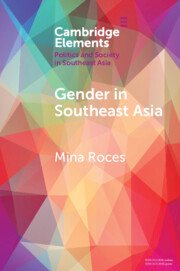Element contents
Gender in Southeast Asia
Published online by Cambridge University Press: 17 March 2022
Summary
- Type
- Element
- Information
- Online ISBN: 9781108680493Publisher: Cambridge University PressPrint publication: 14 April 2022
References
- 8
- Cited by

